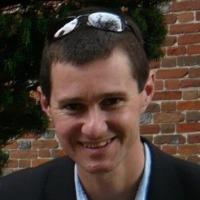Blog
Unless otherwise stated, content is shared under CC-BY-NC Licence
FAIR today, FAIR tomorrow and FAIR forever
Matthew Addis is Chief Technology Officer at Arkivum.
The theme of this year’s World Digital Preservation Day is ‘Breaking Down Barriers’. A great example is recent work on how digital preservation can help ensure scientific data will remain accessible and usable for decades to come. The European Open Science Cloud (EOSC) is bringing together the communities of scientific research and digital preservation to break down the barriers that currently jeopardise the long-term access to hugely important scientific datasets and results.
This is happening both at a strategic level, for example through EOSC’s working group on sustainability that includes a task force on long-term digital preservation (LTDP), and on a very practical and technical level, for example through the ARCHIVER project that is developing new LTDP services for EOSC. Arkivum has been privileged to work in ARCHIVER to find new ways to do cost-effective, scalable, and environmentally friendly digital preservation at scale (more on that below).
Applying for CoreTrustSeal: Part 1
Lee Hibberd is Digital Preservation Manager at the National Library of Scotland.
For many years the National Library of Scotland has talked about joining the great and the good and certifying our digital preservation and access activities against CoreTrustSeal (https://www.coretrustseal.org/). If you’re unfamiliar with Core Trust Seal it is a certification scheme for trustworthy data repositories. Sixteen core criteria are assessed and it's up to you to provide evidence of how your institution satisfies each of them.
Part 1 of this blog is an account of our positive experience up to the point of submitting our application for review in summer 2021. Part 2 will cover “what happened next” and some of the challenges we faced along the way. This will come shortly after gaining the seal. We’re not being presumptuous here – we are simply committed to undertaking any additional work we need to do to demonstrate our competence to the reviewers. The point of the application is not to gain a shiny badge but to improve what we do, and this sentiment is well shared in blogs by other DPC members (see box below with some links).
Saved by digital preservation
Kunika Kono is Technical Lead for Digital Humanities at the Digital Humanities Research Hub, School of Advance Study, University of London
Over the last year, many universities in the UK faced organisational restructure, departmental closures and job cuts. The School of Advanced Study and its institutes were no exception, and in February 2021, the Digital & Publishing department in the Institute of Historical Research (IHR), where I worked, effectively closed.
On Gardening and Digital Preservation… A year of reflection and better engagement
Garth Stewart is Head of Digital Records Unit at the National Records of Scotland
As a practical discipline, tending to a garden feels quite similar to digital preservation: it can never be considered ‘done’. Whatever the season, wherever you are in the world, there’s always something to do; whether it’s the laying of a new lawn (or the installation of a new piece of digital storage infrastructure), the sowing of a new flower bed (or the ingest of new image files), applying fertiliser (or using characterisation tools to enrich metadata), or the odd bit of dead-heading (or the rare act of de-accessioning). Gardening - and digital preservation - are engrossing, progressive, life-long activities.
Remote but connected: students and digital collections
Laura Peaurt is Digital Preservation Officer at Manuscripts and Special Collections, University of Nottingham Libraries.
World Digital Preservation Day always provides a welcome prompt to pause and reflect on our digital preservation journey over the last twelve months. This year we have been asked to consider how digital preservation supports digital connections, unlocks potential and creates lasting value.
At Nottingham Manuscripts & Special Collections we have been begun to realise the opportunity provided by our digital preservation system to encourage broadening access to and use of our digital collections. This includes both our previously hard to access analogue materials (such as VHS and cassette tapes) as well as newly acquired born digital content collected on CDs, DVDs, and floppy disks over the years.
Inspiring curiosity: Increasing access to collections at University of the Arts London
Elisabeth Thurlow is Digital Preservation and Access Manager at University of the Arts London.
Whilst the first phase of the University of the Arts London (UAL) Digital Archives and Collections project aimed to introduce a digital preservation programme including the implementation of a new digital preservation system, the second phase focused on increasing access to the University’s growing digital collections. This led us to the development and recent launch of a new Digital Collections portal.
The university-wide Project focused on digital materials found in its archives, museums and special collections - which include images, video and sound recordings, and an increasing number of born-digital artworks.
‘Bringing the world’s treasures to your desktop’ – digitally preserving the works of Dylan Thomas (1914 - 1953) and Elizabeth Montagu (1718 - 1800)
Alexander Roberts is the Digital Humanities and Research Data Manager at Swansea University.

Over the last 3 years, Swansea University Library has been on a digital preservation journey to increase access and engagement with two important world-class physical collections currently held in the Harry Ransom Centre, University of Texas at Austin, and the Huntington Library, California.
National Libraries, Universal Challenges, and Digital Preservation
Daniel Greenberg is Product Manager for Digital Resources Management at Ex Libris.
The theme for World Digital Preservation Day this year is “Breaking Down Barriers,” highlighting how digital preservation supports expanding horizons for libraries and other institutions. For national libraries, this expansion comes with some unique considerations and best practices.
But let’s take a step back and look at the basic challenges national libraries face in managing preservation of their digital assets.
Digital Curation Lab: leveling up, shortly
Lamia Sassine is Digital Curation Lab Coordinator at the University of Salford
As a relative newcomer to digital preservation the theme Breaking Down Barriers really spoke to me. My background is in archaeology and museum studies, but I started to get attracted to digital curation during my PhD. My research investigated perceptions of Phoenician collections from 20 different museums, and I envisioned the best way to bring them together would be through a digital platform, but this is a story for another time.
What are we missing? Completeness checking with e-journals and why we should care
Micky Lindlar is Digital Preservation Team Leader at Technische Informationsbibliothek (TIB).
A few weeks ago I watched the recording of Helen Hockx-Yu’s excellent presentation on “The obsession with checksums”. In one of the slides Helen talked about “A matter of where to spend energy”, listing her top 5 priorities. One of those priorities is “overlooked things that have lead to data loss”, e.g. “not collecting content”. This really reminded me of the current work we – that is TIB’s digital preservation team – are doing around e-journals and completeness of metadata as well as content.
You might ask yourself now “what does digital preservation have to do with completeness checking and why should I care?”. Life is easy when you interact with a data producer who signs responsible for the completeness of a deposit. But what if you’re tasked to interact with a repository that you harvest data from? Or if you deal with really large deposits (e.g. more than 5 million articles)? And, as a collecting institution, do you blindly trust a manifest given to you by a publisher or do you need to cross-check? Things were easy in the analogue days. The library would receive a journal issue, all articles would be contained within that printed publication and at the end of the year all issues would be bound together in a volume. Not today, my friend!
























































































































































